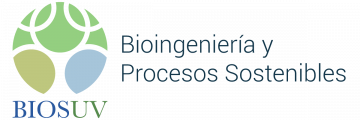Remediación electroquímica y biológica de contaminantes emergentes: líquidos iónicos
Ionic liquids (ILs) have been designed as replacements for conventional organic solvents with high potential to improve and develop new processes for Green Chemistry. This paradigmatic feature has contributed to the fact that ILs have gone beyond the research laboratories, and have soon covered the pathway from the gram scale to the ton magnitude. Thus, the first family of ILs (imidazolium) has already been applied at industrial scale, and therefore it has been registered under REACH regulation on chemicals. This regulation suggests that their distinctive characteristics such as thermo- and chemo-stability could pose environmental risks in terms of toxicity, degradation and persistence when disposed off in both aquatic and soil biotopes. This urges new efforts and development of viable technologies that allow the recovery of the soil with an acceptable cost, in a short time and with the least possible environmental and social impact.
Then, ELECTRO+BIO-ILs aims to: i) set-up of analytical techniques for quantification and identification of ILs and their degradation products, ii) improve the Electro-Fenton treatment through the development of new catalysts and electrodes, and the design of new reactors that would increase the effectiveness of electrochemical treatment and its applicability in the ILs degradation, iii) develop a suitable ILs biodegradation strategy by optimizing the cultivation mode, the operating conditions and the scaling-up, iv) design combined Electro-Fenton and biological strategies that could increase process efficiency by reducing the overall cost of treatment, v) evaluate the mechanisms of adsorption/desorption of ILs on solid matrices and determine the applicability of several electroremediation methodologies to ILs removal, and vi) ascertain the benign character of the proposed biodegradation strategy in terms of toxicity assessment.
- Reference: CTM2014-52471-R
- Financed by: Ministerio Economía y Competividad
- Start: January 2015
- End: July 2018

